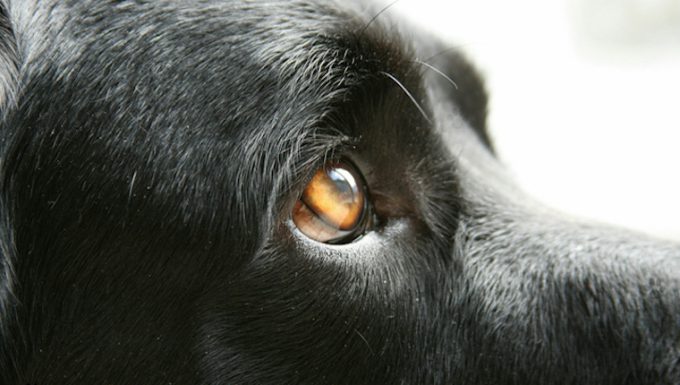Eye displacement in dogs can result in one or both of the eyes moving forward. Usually, a trauma is the cause of the condition.
Unfortunately, if it is not treated quickly, the condition can damage a dog’s vision.
Technically, the condition is known as proptosis.
If you see the signs of eye displacement in your dog, then get to a veterinarian for a proper diagnosis and treatment.
Here’s what you should know about the symptoms, causes, and treatments for the condition.
Symptoms of Eye Displacement in Dogs
The condition produces a range of symptoms. For example, some of the most common symptoms are:
- Bulging eye
- Bloody eye
- Abnormal pupil size
- Red eye
- Inflamed eye
- Blinking problems
- Cornea looking cloudy
Additionally, dogs suffering from the condition can go into shock.
Causes of Eye Displacement in Dogs

The cause of the condition is usually some sort of trauma or injury that affects the face. For instance, some of the situations that might cause this include:
- Dog fights
- Falling over
- Vehicle accident
- Choking (by a choking collar)
- Hitting the head against something
Treatments for Eye Displacement in Dogs
Firstly, your vet will ask about your dog’s symptoms. Secondly, your vet will stabilize your dog, especially if they have been the victim of a trauma.
Thirdly, a physical examination will be carried out. Additionally, X-rays and ultrasounds can be used.
Generally, treatment for the condition focusses on placing the eye back in its correct position. This is usually carried out while a dog is sedated.
Following this procedure, antibiotic medication is usually prescribed. This is to help avoid any infections.
As always, if your vet prescribes your dog any medicine, follow the precise dose and frequency instructions. Also, complete the full course of medicine.
Unfortunately, dogs who suffer from this condition can end up with vision issues even after treatment. Make sure to keep up regular vet appointments to monitor the recovery process.
Have you ever cared for a dog who suffered from this condition? How did your vet help your dog recover? Let us know in the comments section below.









